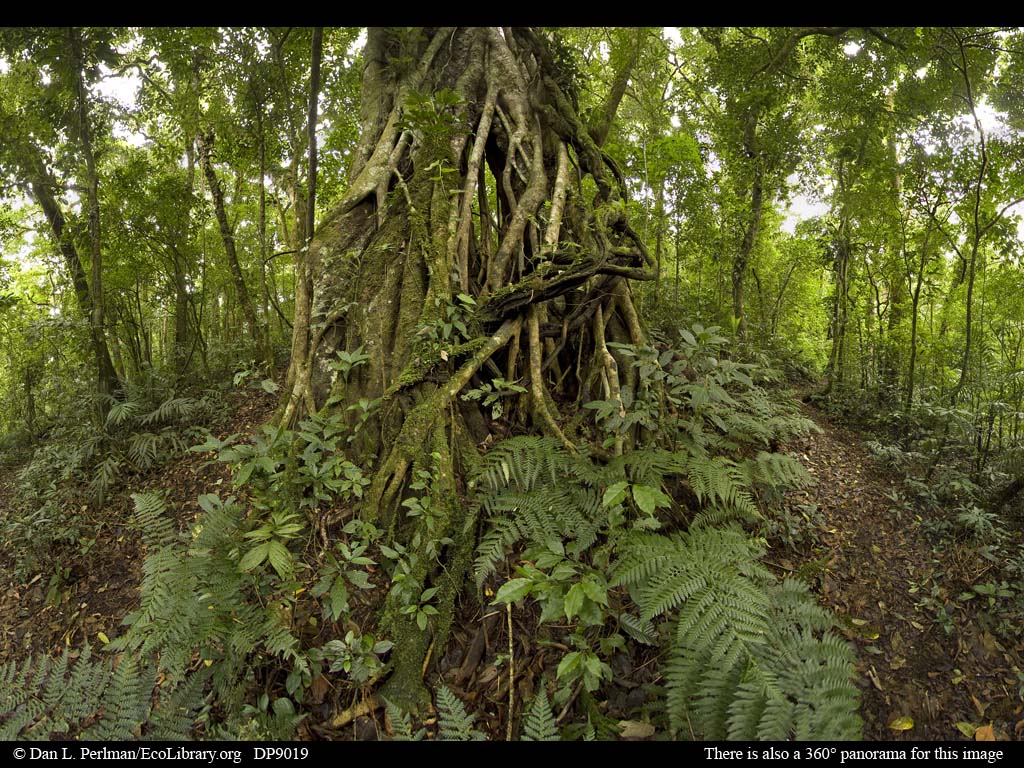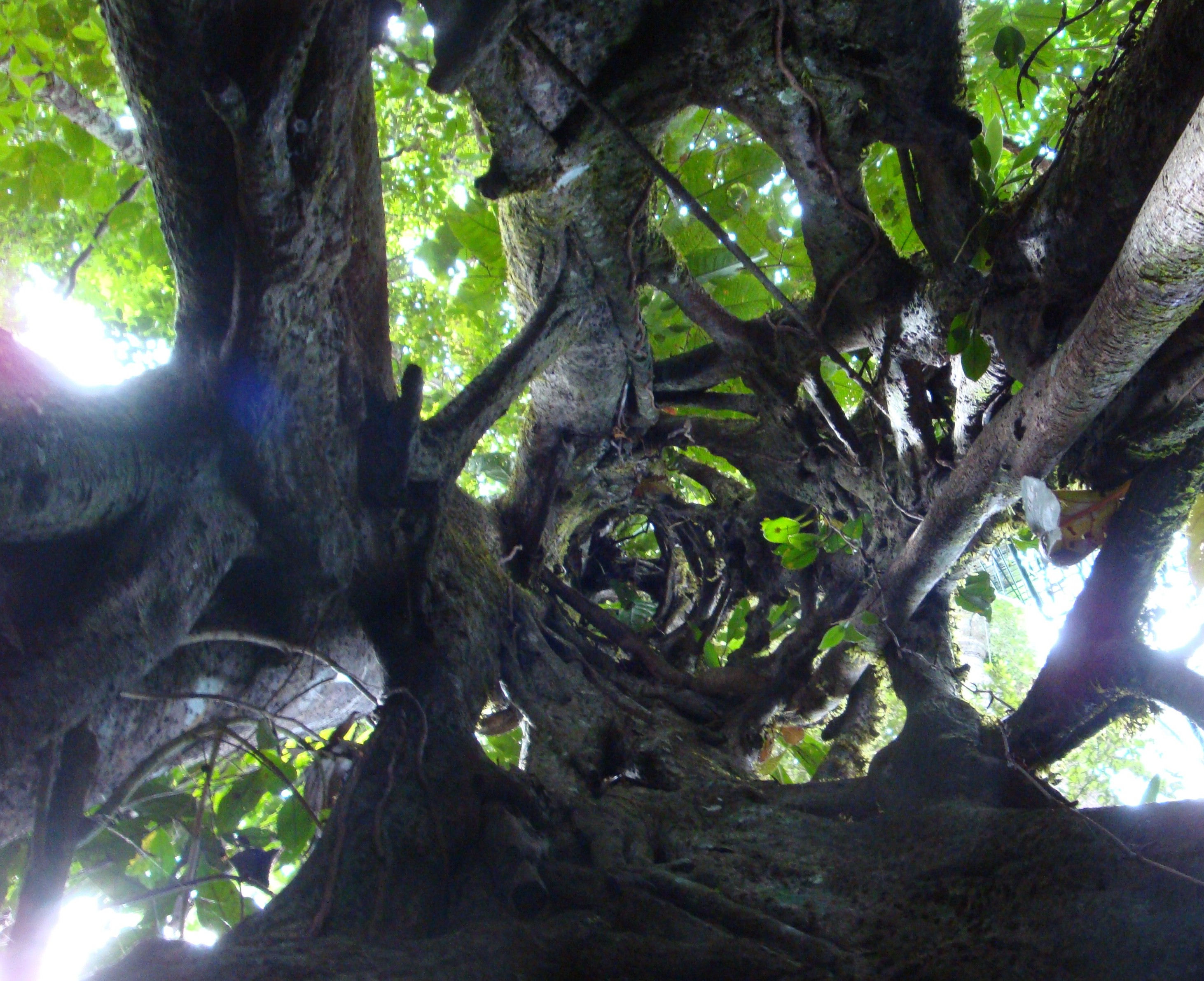
Can a tree tell the story of some forms of capitalism better than an economics lecture? Perhaps.
The most striking image of my first rain-forest excursion here is of a majestic, competitive, powerful survivor -- a 100-foot high ficus aureus, or golden fig like the one shown here:

This tree is a classic rainforest success story -- it has figured out a way to get up high, where there is light enough for survival, without having to invest its energy in a slow growing, dense trunk to painfully lift itself up to the heights -- the strategy used by the tamarind, which can take five times as long as aureus to reach the forest canopy where the light is strongest.
But the golden fig raises some interesting questions about takers and makers. Here's an image of the tree I saw -- taken from inside it and looking skyward -- it's hollow.

Why? Because ficus aureus is more commonly known as "the strangler fig" - the terror of the rainforest. Its seed lands and plants itself high in a fork of an already sky-reaching host -- say that tamarind, which may have invested several hundred years in reaching its height -- takes control by wrapping itself around the entire trunk and then gradually climbs down towards the forest floor while drawing both its structural support and its sustenance from the host. Once it reaches the ground, its roots out compete the host for access to nutrients. The strangler now begins to grow very fast. In the process the strangler girdles the host and leverages its control to destroy it and profit from the access to light which the tamarind had painfully and slowly acquired. Eventually the rotting biomass of the dead host becomes food for the strangler.
So is ficus aureus -- in the rain forest context -- a "taker" or a "maker"? More fundamentally, is it a success story or a parasite? And what does that tell us about the economic counterparts of the strangler, for example leveraged buyout firms which take control of established companies that have built their own assets -- often gradually and slowly -- and then suck out and deploy these resources for their own benefit, not those of the original stakeholders, finally liquidating the original enterprise and replace it with their own short-term structures. (The strangler doesn't live nearly as long as the tamarind.)
A disdain for the patient process of building economic institutions "to last" (in President Obama's phrase), runs through the American economy, far beyond the ranks of leveraged buyout firms. Indeed, making our economy more like the tamarind and less like the strangler may be one of the keys to America's durability as a society. It's fair to note that the rain forest has learned to live with a combination of tamarinds and stranglers. Indeed like all figs, the strangler is a vital source of nutrition for a variety of rainforest creatures, including our closest rain forest relatives, the monkeys. But dealing with the strangler takes its price. The wild guava, for example, gives itself a poison pill against the strangler by shedding its outer bark frequently enough that ficus aureus can't establish its root hold. But that bark shedding, like any poison pill, also weakens the guava by sapping its own nutrient balance. A rainforest economy where strangler became dominant would rapidly collapse -- as some argue the short-term obsessed U.S. economy might in a world of limited natural resources and climate instability -- one where, like the guava, the U.S. can't afford to be shedding our assets just to keep strangler firms from getting control.
The approach the strangler takes to success -- exploit the efforts of others, and value speed and aggression above everything else -- can, indeed, prove "competitive." But do we really want to sacrifice America's work ethic, our traditions of building for the future, and our commitment to sustainability for our children -- so that the most ruthless among us can get to get to the top of rainforest canopy for a brief moment in the light?
A veteran leader in the environmental movement, Carl Pope is the former executive director and chairman of the Sierra Club. Mr. Pope is co-author -- along with Paul Rauber -- of Strategic Ignorance: Why the Bush Administration Is Recklessly Destroying a Century of Environmental Progress, which the New York Review of Books called "a splendidly fierce book."